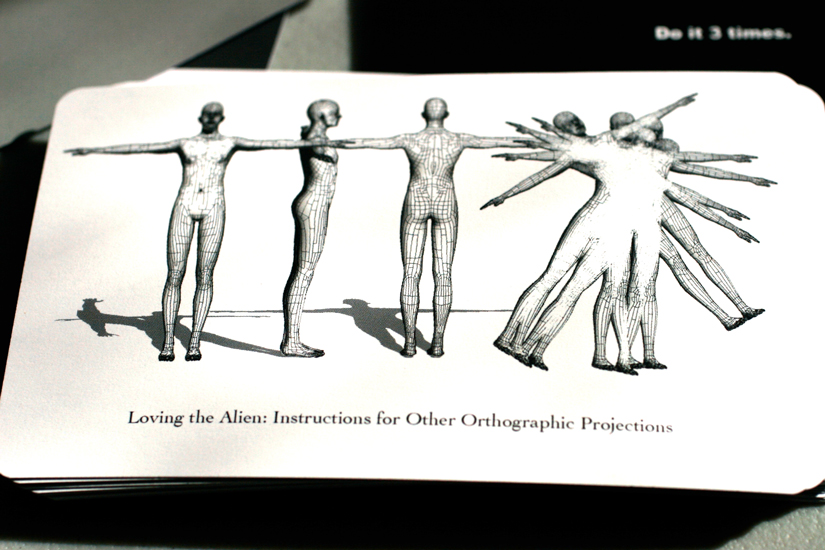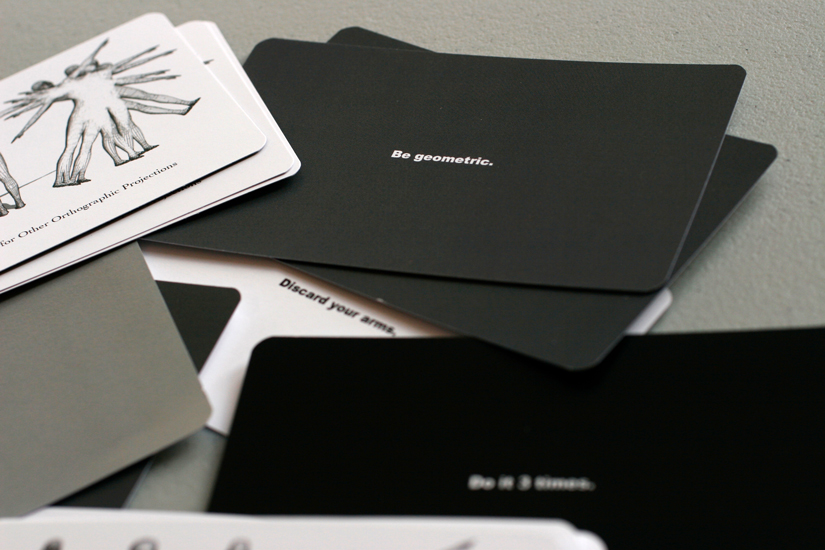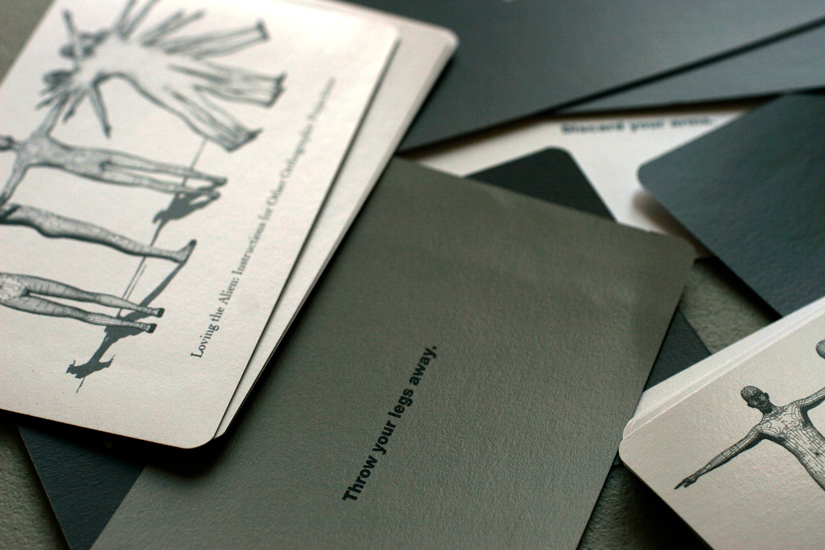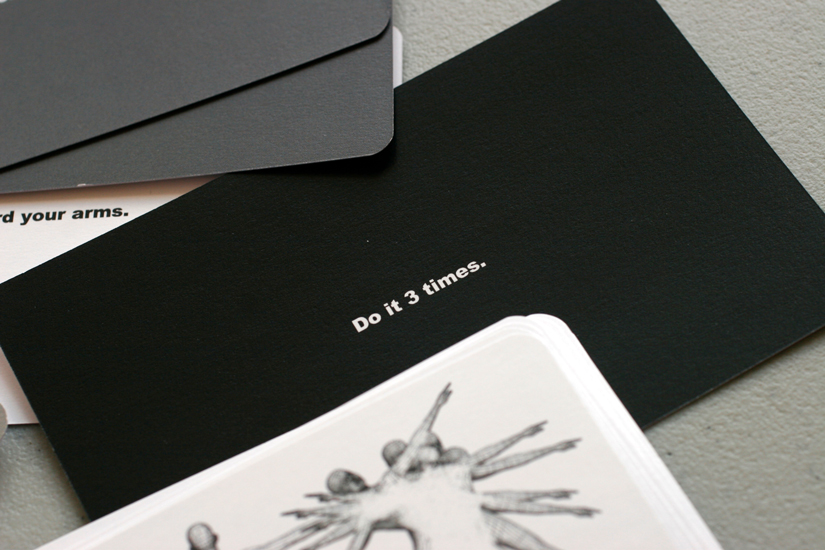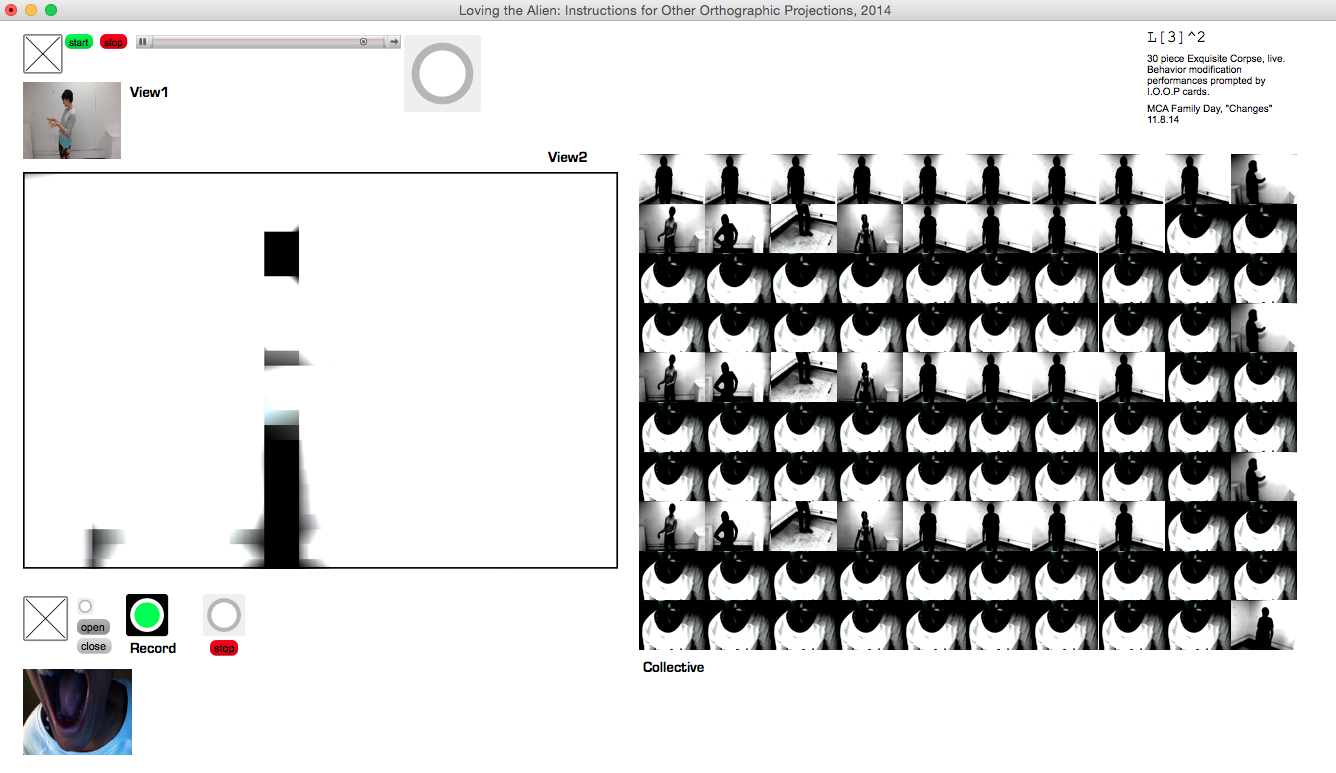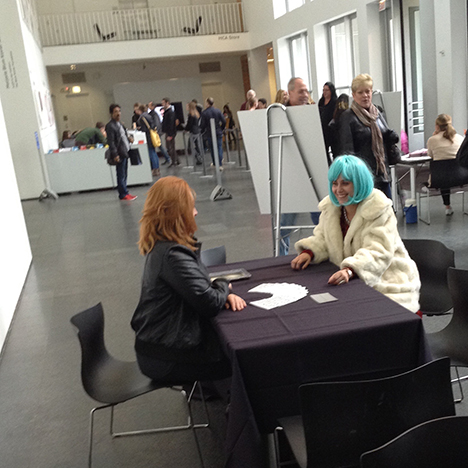I was invited to participate in the the family day event on Nov 8th in 2014. I decided to create a performance based activity for families visiting the museum. Since the David Bowie Is exhibit is up and I have another unpcoming performance in conjunction with the exhibit, I decided to do something that would encourage the visitors to change their persona. For this specific presentation, I've written a program in Max that will record the performances of the audience, modify them, and play them back sequentially on a wall in the lobby of the MCA. It'll also collect a specific number of images of the participants to create a matrix of "instances" of the performance. We'll be located under the Adam Pendelton "Sympathy for the Devil" pieces, which are black and white works on canvas, so it's a great space for this performance.
"Loving the Alien: Instructions for Other Orthographic Projections" is inspired by the Oblique Strategies written by Brian Eno and Peter Schmidt as a way to introduce lateral thinking into creative work. These strategies were printed as a deck of cards and were used during recording sessions for several of David Bowie's albums. "I.O.O.P." borrows from this concept with the goal of changing everyday behavioral presentations into more creative (and liberating) bodily experiences. The reference to orthographic projections suggests that there is a side of every human being that is hidden away from public presentation, and it is my belief that this is an untapped source of creative potential.
Images (L-R):
(1-4) Images of the deck of cards with some of the 'easier' instructions. Designed using Maya and Ps. Printed online in shades of grey.
(5) Screenshot of Max patch for Family day at the MCA. The patch collects the behavior modifications prompted by the I.O.O.P. cards, records them to the hard drive, then plays them back in sequential order. The patch only records a certain number of videos, so when that number is reached, the original files are overwritten. This helps to keep my laptop from being inundated with video files and keeps the visuals fresh during the 4 hours at the gallery. It also addresses any worries that the visitors may have with the collection of their images. The patch uses a couple of VIZZIE modules to process the recordings while the collection and playback is handled by Max and Jitter objects. I'm also grabbing still frames from all of the videos and keeping 100 of them circulating in the patch to make a version of an exquisite corpse. Versions 2 and 3. Performance documentation to come.
(6) Screenshot of the messiest part of the patch, the image organizer. It's not nearly as complex as the video component of the patch at all, it just looks more interesting.
(7-9) Performers MaryAnn McGovern and Sarah Chmielewski dealing out the cards to families (and each other) before sending them over to me for the video capture.
(8) Screen capture (post event) of audience performances which were projected in the space during the event. The patch is designed to save only the most recent videos to the hard drive.
